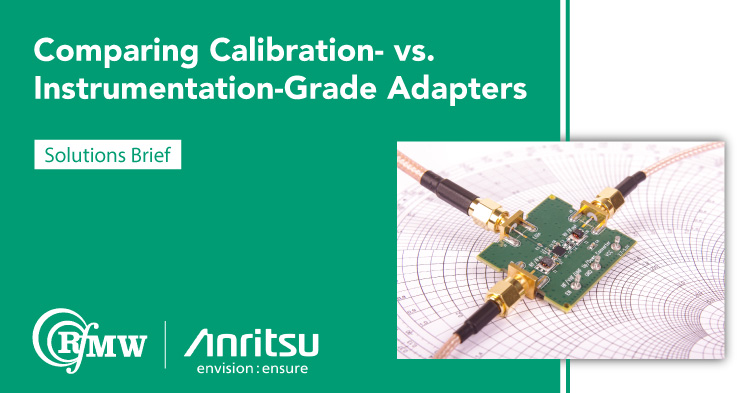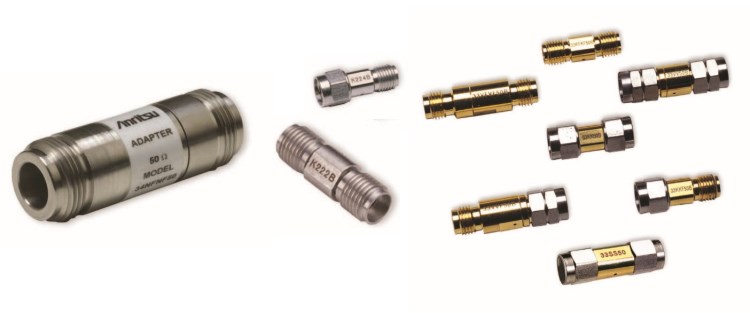
|
|
Adapters are the interfaces between two dissimilar components. While an adapter’s performance is directly proportional to its application and how stringent the requirements, it should have a minimal effect on the fidelity of the signal passing through it and not introduce any new unwanted signal phenomenon. For example, the user should not see an excessive signal power loss over frequency or over-moding (where a signal loss in a small frequency bandwidth results in an insertion loss dip). When choosing an adapter for measurements, users are presented with options or grades of performance. Common grades include calibration, instrumentation, general purpose, and metrology. While manufacturers may use some of these interchangeably (e.g., calibration vs. metrology), it is important to look at the adapter’s specifications as there are distinct differences between their performance, material type, design, and price.
Calibration- vs. Instrumentation-Grade General. The techniques for manufacturing calibration- or metrology-grade adapters are much more stringent than instrumentation-grade. For example, the dielectric support beads in calibration-grade adapters are optimized to 50Ω to reduce reflections and over-moding. Pin depth is also a defining characteristic. This ensures that the center pin and receptacle are as closely aligned as possible to propagate a signal efficiently as well as minimize reflection, over-moding, and insertion loss. Instrumentation-grade adapters are not as mechanically constrained and performance is adequate for the majority of applications. Pin depth tolerances may be loose but are within the stated levels, and enough attention is placed on bead design to get decent return and insertion loss performance. Performance. Calibration-grade adapters are suitable for applications where precise characterization is essential. These solutions usually feature good return and low insertion losses with minimal measurement uncertainties. For some solutions, like in-series adapters, meticulous construction allows phase equivalence between different gendered adapters. Interchanging these adapters will not invalidate a measurement reference plane. Instrumentation-grade adapters have good performance with established reference planes, however they do not share electrical length and phase coherence between adapters like calibration-grade solutions. For common measurements between instruments, instrumentation-grade will provide good performance. Material. Electrical, mechanical, and environmental specifications have a direct correlation with the surface material of the adapter. For calibration-grade adapters, gold plating is generally used. It is an excellent conductor that also helps achieve low reflections and optimal performance. Instrumentation-grade adapters feature stainless or passivate steel materials that can also qualify these adapters for environmental and mechanical specifications. The major difference between materials is electrical performance, which carries the most weight when deciding which adapter is right for a given application. Price. While calibration-grade adapters are much higher priced than instrumentation-grade solutions, the performance justifies the difference. Utilizing calibration-grade solutions will provide a user with smaller insertion loss, lower return loss, better repeatability, and smaller measurement uncertainties. Anritsu Adapter Solutions Anritsu offers a variety of both calibration-grade components (for users that need to make precision measurements) and instrumentation-grade components (for those that only need to get a signal from one component to the next, where measurement uncertainty is not critical, or precision performance is not warranted).
Excerpted from Anritsu Solutions Brief |
 |

